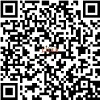(2) Matt Smith
*corresponding author
AbstractWillingness to communicate (WTC) in a foreign language (FL) has become one of the most important affective variables in the context of learning a foreign language including motivation, anxiety, learner beliefs, and many others. This study looks into the underlying causes of English students' propensity to speak English, particularly in higher education settings after the Covid-19 pandemic. The study also determines the WTC of college students in English classes. One thousand students who are presently enrolled in English programs at Palestinian universities constitute the study's participants. The study employed a descriptive research design: a questionnaire was used to collect the data, which were then analyzed using statistical analysis methods in the SPSS program. The findings of the study indicated that the two primary factors negatively affecting the WTC among English learners in Palestine's colleges and universities were personality traits and a lack of confidence in one's speaking abilities.
KeywordsWillingness to Communicate; WTC; EFL; Palestine
|
DOIhttps://doi.org/10.31763/ijele.v6i1.1380 |
Article metrics10.31763/ijele.v6i1.1380 Abstract views : 797 | PDF views : 407 |
Cite |
Full Text Download Download
|
References
[1] J. Smith, M. & Traxler, Digital Learning in Higher Education. Edward Elgar Publishing, 2022. doi: 10.4337/9781800379404
[2] D. V. Barona, “Native and non-native speakers’ perceptions of non-native accents,†Números, vol. 19, no. 1, 2024.
[3] M. Kumar and P. Mamgain, “Generationâ€Z Student Videoâ€Based Learning Pedagogy Preference and Teaching Challenges,†in Redefining Virtual Teaching Learning Pedagogy, Wiley, 2023, pp. 155–167. doi: 10.1002/9781119867647.ch9
[4] I. Yuyun, “Investigating university student engagement in online learning: A case study in EFL classroom,†Indones. J. Appl. Linguist., vol. 12, no. 3, pp. 648–667, Jan. 2023, doi: 10.17509/ijal.v12i3.46035.
[5] N. Mukati, N. Namdev, R. Dilip, N. Hemalatha, V. Dhiman, and B. Sahu, “Healthcare Assistance to COVID-19 Patient using Internet of Things (IoT) Enabled Technologies,†Mater. Today Proc., vol. 80, pp. 3777–3781, 2023, doi: 10.1016/j.matpr.2021.07.379.
[6] H. A. Qaddumi and M. Smith, “Implementation of learning management systems (Moodle): effects on students’ language acquisition and attitudes towards learning English as a Foreign Language,†Trends High. Educ., vol. 3, no. 2, pp. 260–272, 2024. doi: 10.3390/higheredu3020016
[7] H. Reinders, C. Lai, and P. Sundqvist, The Routledge Handbook of Language Learning and Teaching Beyond the Classroom. London: Routledge, 2022. doi: 10.4324/9781003048169
[8] H. A. Qaddumi, M. Smith, Y. Alawneh, N. Shawamreh, A. Bakeer, and M. Itemizeh, “Palestinian undergraduate learners’ foreign language classroom anxiety in online environments,†Stud. English Lang. Educ., vol. 10, no. 3, pp. 1358–1378, Sep. 2023, doi: 10.24815/siele.v10i3.30031.
[9] J. A. Miranda and A. Y. Wahyudin, “Pre-service teachers’ strategies in improving students' speaking skills,†J. English Lang. Teach. Learn., vol. 4, no. 1, pp. 40–47, 2023.
[10] A. Taglialatela, “ELF- or NES-oriented pedagogy: enhancing learners’ intercultural communicative competence using a dual teaching model,†Appl. Linguist. Rev., vol. 15, no. 2, pp. 377–401, Mar. 2024, doi: 10.1515/applirev-2020-0154.
[11] V. T. S. Law, H. H. L. Yee, T. K. C. Ng, and B. Y. F. Fong, “Transition from Traditional to Online Learning in Hong Kong Tertiary Educational Institutions During COVID-19 Pandemic,†Technol. Knowl. Learn., vol. 28, no. 3, pp. 1425–1441, Sep. 2023, doi: 10.1007/s10758-022-09603-z.
[12] S. M. Alhaider, “Teaching and learning the four English skills before and during the COVID-19 era: perceptions of EFL faculty and students in Saudi higher education,†Asian-Pacific J. Second Foreign Lang. Educ., vol. 8, no. 1, p. 19, Jul. 2023, doi: 10.1186/s40862-023-00193-6.
[13] S. Bai, “The predictive effects of foreign language anxiety and boredom on willingness to communicate among Chinese struggling EFL learners,†Heliyon, vol. 9, no. 9, p. e19610, Sep. 2023, doi: 10.1016/j.heliyon.2023.e19610.
[14] K. Kaspar, K. Burtniak, and M. Rüth, “Online learning during the Covid-19 pandemic: How university students’ perceptions, engagement, and performance are related to their personal characteristics,†Curr. Psychol., vol. 43, no. 18, pp. 16711–16730, May 2024, doi: 10.1007/s12144-023-04403-9.
[15] M. Smith and H. Scott, “Distance Education under Oppression: The Case of Palestinian Higher Education,†Educ. Sci., vol. 13, no. 7, p. 729, Jul. 2023, doi: 10.3390/educsci13070729.
[16] H. Ramahi, “Education in Palestine: Current challenges and emancipatory alternatives,†Rosa Luxemburg Stiftung Regional Office Palestine. pp. 1–51, 2015.
[17] J. Traxler, “Decolonising Digital Language Learning in Palestine,†J. Res. Appl. Linguist., vol. 14, no. 2, pp. 20–29, 2023.
[18] H. A. Elhawa, C. Alexander, and J. Krajka, “Online Education in Palestine: ELT Teachers doing ERT (again),†Teach. English With Technol., vol. 2024, no. 1, 2024, doi: 10.56297/FSYB3031/EWWI7109.
[19] A. J. Khawaja, V. S. Jakar, and B. R. Schvarcz, “English as a Mediator for Communication and Understanding: The Case of Israel and Palestine,†in Policy Development in TESOL and Multilingualism, Singapore: Springer Nature Singapore, 2021, pp. 217–230. doi: 10.1007/978-981-16-3603-5_17
[20] N. Zayed, “Palestinian High School Students’ Attitudes towards Studying English Language and Culture,†Int. J. Arab. Stud., vol. 21, no. 2, pp. 7–28, Jun. 2021, doi: 10.33806/ijaes2000.21.2.1.
[21] K. S. Al-safadi, H. A., Shgair, M. S. A., & Al Qatawnih, “The Effectiveness of Designing E-Learning Environment based on Mastery Learning and Artificial Intelligence on Developing English Speaking Skills among Tenth Graders in Palestine,†Education, Computer Science, vol. 31, no. 1, Jan. 2023, doi: 10.33976/IUGJEPS.31.1/2023/22.
[22] J. Jelinkova, P. Petrus, and A. Laue, “The impact of feedback on students’ willingness to communicate in foreign language learning: Systematic review,†Journal of Teaching English for Specific and Academic Purposes. p. 663, 23-Jan-2024, doi: 10.22190/JTESAP230911051J.
[23] D. Chun, R. Kern, and B. Smith, “Technology in Language Use, Language Teaching, and Language Learning,†Mod. Lang. J., vol. 100, no. S1, pp. 64–80, Jan. 2016, doi: 10.1111/modl.12302.
[24] K. Sato and R. C. Kleinsasser, “Communicative Language Teaching (CLT): Practical Understandings,†Mod. Lang. J., vol. 83, no. 4, pp. 494–517, Dec. 1999, doi: 10.1111/0026-7902.00037.
[25] Z. C. Aratusa, “Students’ Perceptions on the Use of Mobile-Assisted Language Learning (MALL) in Learning Pronunciation,†Int. J. Curr. Sci. Res. Rev., vol. 05, no. 07, Jul. 2022, doi: 10.47191/ijcsrr/V5-i7-50.
[26] G. M. Nalliveettil and T. H. K. Alenazi, “The Impact of Mobile Phones on English Language Learning: Perceptions of EFL Undergraduates,†J. Lang. Teach. Res., vol. 7, no. 2, p. 264, Mar. 2016, doi: 10.17507/jltr.0702.04.
[27] I. Wisnuwardana, “Students’ Attitudes towards the Use of Smartphone for Language Learning Purposes,†JET (Journal English Teaching) Adi Buana, vol. 4, no. 2, pp. 178–191, Oct. 2019, doi: 10.36456/jet.v4.n2.2019.2080.
[28] J. Kacetl and B. KlÃmová, “Use of Smartphone Applications in English Language Learning—A Challenge for Foreign Language Education,†Educ. Sci., vol. 9, no. 3, p. 179, Jul. 2019, doi: 10.3390/educsci9030179.
[29] Mahmoud Itmeizeh, Zeiadee Khalil, and Matt Smith, “Palestinian EFL Students’ Perceptions of Using Edmodo in Developing their Writing Skills,†Education, Linguistics., vol. 1, no. 1, pp. 132–143, Dec. 2022, doi: 10.59994/pau.2022.1.132.
[30] M. A. Matuzas, “Factors Influencing Students’ Willingness to Communicate in Korean Elementary School EFL Classrooms,†Networks An Online J. Teach. Res., vol. 23, no. 2, Jan. 2022, doi: 10.4148/2470-6353.1359.
[31] X. An et al., “Modeling English teachers’ behavioral intention to use artificial intelligence in middle schools,†Educ. Inf. Technol., vol. 28, no. 5, pp. 5187–5208, May 2023, doi: 10.1007/s10639-022-11286-z.
[32] J. Wang and B. Bai, “Whose goal emphases play a more important role in ESL/EFL learners’ motivation, self-regulated learning and achievement?: Teachers’ or parents’,†Res. Pap. Educ., vol. 38, no. 4, pp. 520–542, Jul. 2023, doi: 10.1080/02671522.2022.2030395.
[33] R. Bianchi and A. Hussein - Abdel Razeq, “The English Language Teaching Situation in Palestine,†2017, pp. 147–169. doi: 10.1007/978-3-319-46778-8_10
[34] R. Dwaik and A. Shehadeh, “Motivation Types among EFL College Students: Insights from the Palestinian Context,†An-Najah Univ. J. Res. - B, vol. 24, no. 1, pp. 333–360, Jan. 2010, doi: 10.35552/0247-024-001-011.
[35] H. Scott and M. Smith, “Innovation from necessity: digital technologies, teacher development and reciprocity with organisational innovation,†Open Learn. J. Open, Distance e-Learning, vol. 39, no. 2, pp. 170–187, Apr. 2024, doi: 10.1080/02680513.2024.2307627.
[36] M. R. Alam, D. Ansarey, H. Abdul Halim, M. M. Rana, M. R. K. Milon, and R. K. Mitu, “Exploring Bangladeshi university students’ willingness to communicate (WTC) in English classes through a qualitative study,†Asian-Pacific J. Second Foreign Lang. Educ., vol. 7, no. 1, p. 2, Dec. 2022, doi: 10.1186/s40862-022-00129-6.
[37] A. Bakeer, K. Dweikat, and M. Smith, “The effectiveness of project-based learning on improving the undergraduate students’ speaking skills through M-learning.†Rihan, 2023.
[38] E. Marton and P. D. MacIntyre, “Feedback from L1 users – a potential facilitator of L2 use,†J. Multiling. Multicult. Dev., vol. 41, no. 5, pp. 457–470, May 2020, doi: 10.1080/01434632.2019.1634721.
[39] M. Amiryousefi, “Willingness to communicate, interest, motives to communicate with the instructor, and L2 speaking: a focus on the role of age and gender,†Innov. Lang. Learn. Teach., vol. 12, no. 3, pp. 221–234, Jul. 2018, doi: 10.1080/17501229.2016.1170838.
[40] F. S. Ilyas, “Exploring University Students’ Willingness to Communicate and Unwillingness to Communicate in EFL,†J-SHMIC J. English Acad., vol. 9, no. 1, pp. 28–41, Feb. 2022, doi: 10.25299/jshmic.2022.vol9(1).8743. doi: 10.25299/jshmic.2022.vol9(1).8743
[41] A. Nugroho, “Learners’ Willingness to Communicate in a Foreign Language: The Role of Informal Digital Learning of English,†ELE Rev. English Lang. Educ. Rev., vol. 1, no. 2, pp. 125–133, Nov. 2021, doi: 10.22515/ele-reviews.v1i2.4396.
[42] A. Soyoof, “Unearthing Iranian mothers’ mediation strategies during their children’s home digital literacy practices in English,†Interactive Learning Environments. pp. 1–15, 14-Sep-2022, doi: 10.1080/10494820.2022.2121732.
Refbacks
- There are currently no refbacks.
Copyright (c) 2024 Hussam Qaddumi, Matt Smith

This work is licensed under a Creative Commons Attribution-ShareAlike 4.0 International License.

International Journal of Education and Learning
ISSNÂ 2684-9240
Published by Association for Scientific Computing Electronics and Engineering (ASCEE)
W : http://pubs2.ascee.org/index.php/ijele
E : zalik@ascee.org

This work is licensed under a Creative Commons Attribution-ShareAlike 4.0 International License.






















